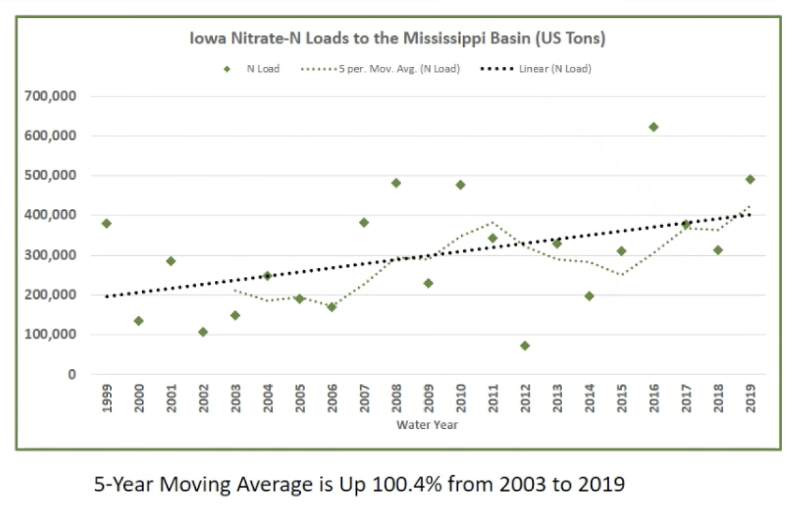by Jared Strong, Iowa Capital Dispatch
May 12, 2024
Nitrate contamination of Iowa’s rivers has surged in recent weeks amid heavy, widespread rainfall, according to data collected by the Iowa Water Quality Information System.
Concentrations of nitrate in several large waterways — including the Boone, Cedar, Iowa and Turkey rivers — have recently reached four-year peaks, the data show. Further, many of the affected rivers also have much higher than usual stream flows, according to the U.S. Geological Survey. That often reduces the concentrations.
Because the flows and concentrations are so high, the total nitrate load is also very high.
“This is one of the biggest nitrate leaching events in 11 years,” said David Cwiertny, director of the Center for Health Effects of Environmental Contamination at the University of Iowa.



